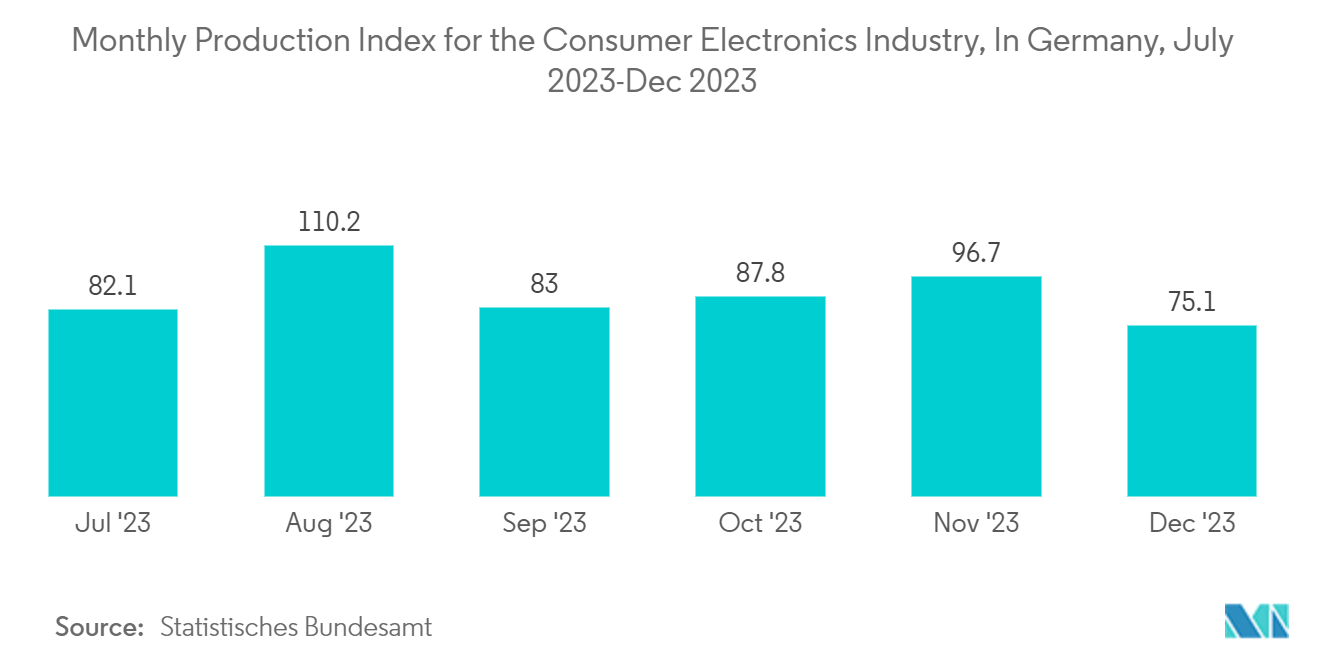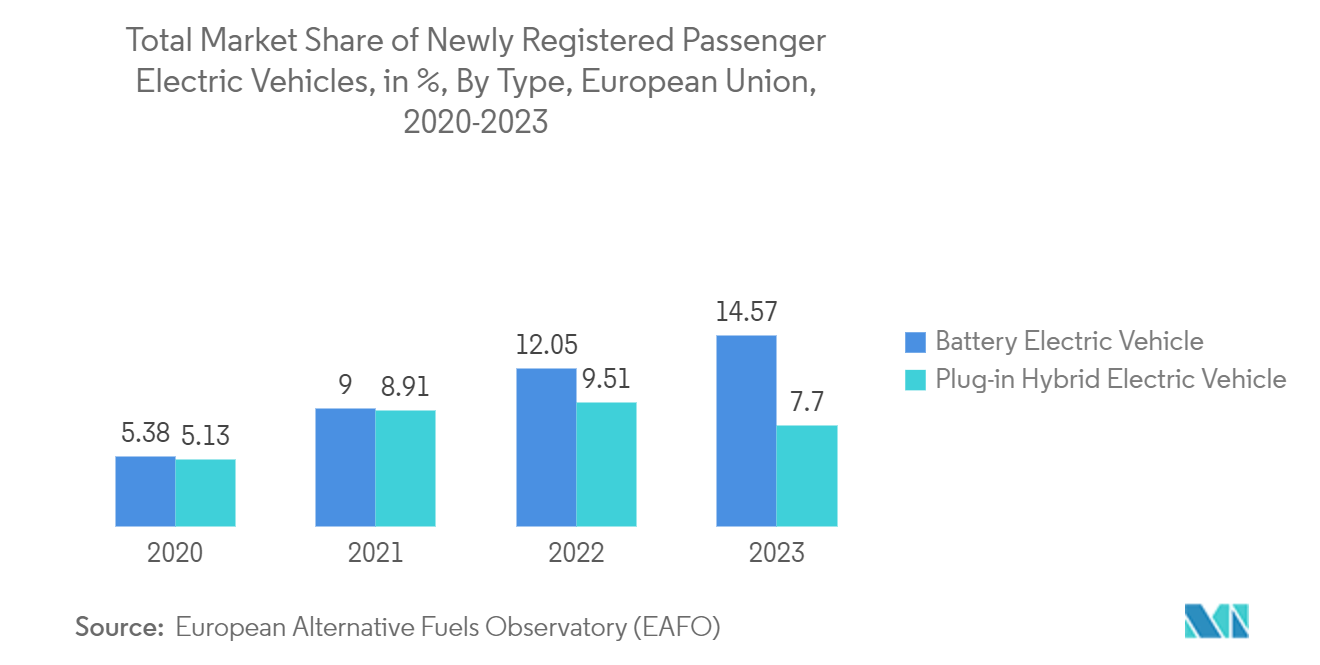Market Trends of Europe Integrated Circuits Industry
Memory Segment is Expected to Have a Significant Growth Rate
- Semiconductor memory includes various electronic data storage devices used in multiple applications. These applications span personal computers (PCs and laptops), consumer electronics (cameras and phones), commercial IT sectors (telecom and data centers), traditional industrial uses, and the expanding IoT landscape. The increasing use of memory ICs in automotive electronics and the rising application of memory storage chips in electronic devices are key factors driving the demand for memory products.
- The increasing demand for data centers also boosts the demand for memory components. Large data center projects in Europe, such as DRAM, contribute to the strong demand for memory.
- DRAM is a high-volume, commodity memory semi-component commonly used in smartphones, tablets, PCs, and servers, among others. Historically, DRAM memory technology has undergone die shrinks, and with the release of the next-generation memory module, the x/y memory cell pattern on the silicon wafer is getting smaller. This is also increasing the cost of manufacturing the next generation of DRAMs due to the rising requirement for precision manufacturing.
- The market for memory chips is driven by the rising popularity of electric automobiles, connected cars, and electronic devices and the increased uptake of innovative technologies like the Internet of Things. Additionally, the growth of application industry verticals like consumer electronics, automotive, and IT and communications in growing economies like Germany, the United Kingdom, and France is anticipated to be a significant market driver.
- Owing to the increasing demand for memory chips, the region provides certifications to global companies to boost demand for NAND Flash and solid-state drives. For instance, SK Hynik Inc., the world's second-largest memory chipmaker, earned international certification for its automotive memory chips from Europe, becoming the first South Korean chipmaker to win the recognition. ASPICE1 Level 2 certification is an industry-standard guideline for automotive software development, particularly for in-vehicle NAND memory chips. European carmakers introduced it to evaluate auto parts suppliers' reliability and capabilities.

The Automotive Industry is Expected to Record Significant Market Growth
- Semiconductor chips have become an integral part of modern-day vehicles, owing to their widespread use in various vehicle functions. Chips used in cars can take many forms, ranging from single components containing a single transistor to intricate integrated circuits controlling a complex system.
- Semiconductor devices, such as memory devices in automobiles, store data. Automobiles have various types of distributed memory, such as ROM, NOR NAND, DRAM, FLASH, and SRAM. Memory devices are widely used in advanced automotive applications such as advanced driver assistance systems, instrument clusters, enriched cabins, powertrains, connected cars, autonomous vehicles, and shared vehicles.
- As automobiles become more sophisticated and interconnected for entertainment, networking, and safety, integrated storage becomes more important. The need for memory devices in the automobile industry is driven by ongoing innovations to provide solutions to the industry's changing requirements.
- According to the European Union, connected device data generation will increase from 33 zettabytes in 2018 to 175 zettabytes in 2025. The European Union declared that its Data Act would govern the data exchanged between connected cars. As a result, major vendors in the area continually invest in new technology and product introductions to keep up with the demand while coping with the regulations.
- Germany is a global automotive powerhouse; it produced over 4 million cars in 2023. The automotive industry contributes significantly to Germany's economy and innovation, with a substantial portion of R&D investment. Tesla's expansion in Germany and the country's commitment to electric vehicles (EVs) drive demand for ICs in automotive electronics. Spain is Europe's second-largest automaker, with a growing focus on electric vehicle production. Major investments from companies like Volkswagen and Chery Auto signal a promising future for the Spanish automotive industry. The shift toward electric vehicles aligns with Europe's carbon neutrality goals, increasing the demand for ICs in EVs.


